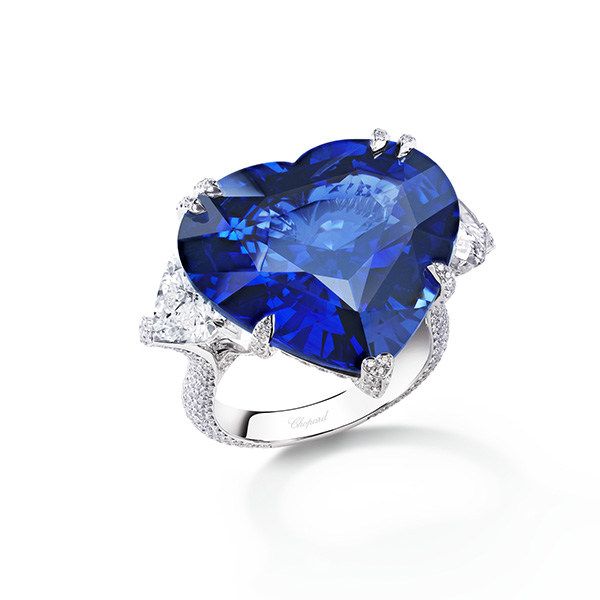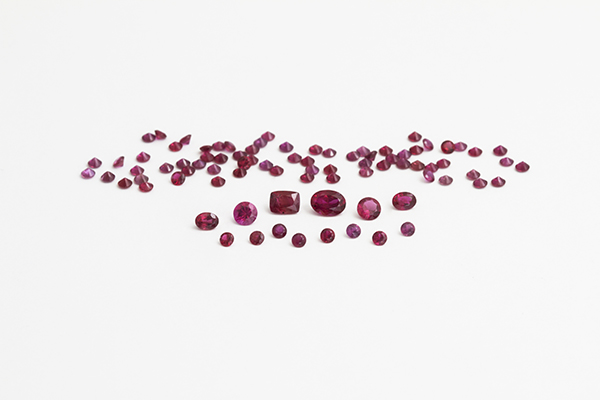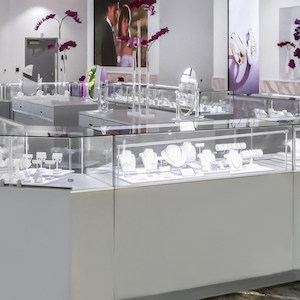
A word to the wise: If you haven’t yet booked accommodations for this year’s gem shows, which kick off later this month in Tucson, you may struggle to find a decent room at a reasonable rate, says Stuart Robertson (pictured), president of Gemworld International in Chicago.
“People will show up in large numbers,” he tells JCK. “We noticed when we were booking our hotels a few months ago that a lot of hotels were already sold out. I think it’ll be a good show, but we’ll see different things compared with 2020.”
Chiefly, expect to find higher prices on many fine goods and discounts at the low end. “Things below $500 used to be a very strong price point, but that’s fallen off completely,” Robertson says.
What else? Read on for Robertson’s views on supplies, pricing, and the problem with the term ethical sourcing. The interview has been condensed and edited for clarity.
What are you hearing from the marketplace on the eve of the gem shows?
People are cautiously optimistic, but I would stress the cautious part. The market is changing. The industry had the benefit of not facing the oversupply that industries we compete with have faced. As supply chain issues worked their way out in apparel, you saw big discounts at the major retailers because they got a lot of inventory that landed on them in the second half of 2022.
We have not had that in this industry. We lost some of the workforce in the pandemic, and a lot of them have not come back. This is mostly affecting small-scale production on the colored stone side. We do have inventory, but it’s not by any means bulging. So prices are high but they’re supported by current levels of supply and demand.
Let’s linger on pricing for a moment. Can you elaborate on how it’s changed?
People will probably be surprised that certain categories have gotten more expensive if they haven’t been to Tucson since the 2020 show. We’re seeing price points that are active and those that are not. Lower price point goods, $500 and under, are seeing very big reductions. Those are the shoppers affected most by the rising cost of essentials. Marry that to interest rate increases and you have problems that affect lower- and middle-class shoppers.
Where we’re seeing a lot of activity is in the higher-quality, finer gemstones. There’s not a lot of material there. Price points in the $5,000-and-above range remain strong. Where people are going to look are the classic gemstones. We’ll see some of the exotics doing okay, but that’s a smaller market of interest. I think retail jewelers will look to the classics because people are aware of them.

Price points are going to be stronger than people are expecting. Prices on sapphire, emerald, ruby have gone up quite a bit. You’ll see beryls, different garnets—reds and oranges—are going to be very strong. Tourmaline—the greens, the oranges—are going to sell pretty well because they give you a nice look; they overlap some of the fancy colors of sapphire, but they are far more affordable.
Are there any promising new supplies coming on to the market?
I haven’t heard of anything new lately. We will see stuff reworked and recalibrated to bring into the market. I talked to Eric Braunwart a few weeks ago; he was reworking some of his inventory to meet specific requests from his clients, more artisans working out of galleries as opposed to traditional jewelers.
Chat with Bill Larson at Pala International. They’ve been working a pocket of the Tourmaline Queen Mine; they finally found another pocket producing nice interesting stuff. And American-produced gemstones have been strong in the market the last few years and I think will be again in Tucson. The Pala mine stuff will be an interesting story.
What’s behind the interest in American gems? Does it have to do with growing interest in responsible sourcing?
That’s a big part of it. We have something a lot of places don’t have: an EPA. From a social and environmental impact, someone’s actually monitoring our mines. It’s not easy to get a mining permit in the U.S. You can’t start dredging rivers and killing a bunch of salmon.
The emphasis that’s been placed on sourcing and how materials come to market—we make a strong case for how we produce stones in the U.S. All these places, the mines are documented and they are known to be safe and they have to operate in a transparent manner.
How would you describe the American gem trade’s collective response to the ethical sourcing movement? Is everyone on board?
About two decades ago, Eric Braunwart gave a talk at AGTA when he was first introducing this idea of fair trade. Eric referenced some of Whole Foods’ practices and why it would make sense for the jewelry industry and why his company was going to start adopting them. This was literally 20 years ago. There were eight of us in that room. No other AGTA gem dealers attended though everybody knew about it. After I left, I was stopped by a couple people, and was told to ignore it, it’s just going to ruin the industry. “He’s grandstanding.”
Today, if I had a dollar for every one who was doing what they said they were doing, I’d be poor. Because very few people are actually doing anything. A few firms, Columbia Gem House and a few others, are doing a lot of work to make sure they understand their supply chains, but the majority of companies are doing the bare minimum. Not because they don’t want to but, because it’s a very fragmented supply chain.

So where does that leave the ethical sourcing movement?
I think the industry does okay with regards to sourcing, but a lot of people have seized on it as an added value term. The terms themselves are not well-defined and until we come up with definitions, a lot of terms will be floated to consumers who will think they mean something when they really don’t.
When you have terms like ethical dealer and ethical sourcing without definitions, it creates confusion for the industry. And we’ve seen it for decades: Confused consumers go to less confusing places to spend their money. Our industry needs to operate with a better, clearer list of definitions for some of these terms or we should expect the cruise industry to really get a bump, because that’s what we compete with.
Any final bits of advice for gem shoppers?
Beautiful gems are always the easiest to sell. This is a year that people will want to focus on higher quality even if it means getting a smaller stone. There are all kinds of pressures on the economy, but gemstones have always served multiple purposes. When times are good, they’re beautiful adornment. When times are less good, there is the perception that they are a vehicle for holding wealth. This year will have multiple reasons to buy, but for retail jewelers, better quality stones, even if they’re a little bit smaller, will be easiest to sell.
Last question: Do you have a favorite Tucson restaurant?
I always end up at Gentle Ben’s because it’s a student hangout and the beer is cheap.
- Subscribe to the JCK News Daily
- Subscribe to the JCK Special Report
- Follow JCK on Instagram: @jckmagazine
- Follow JCK on X: @jckmagazine
- Follow JCK on Facebook: @jckmagazine






